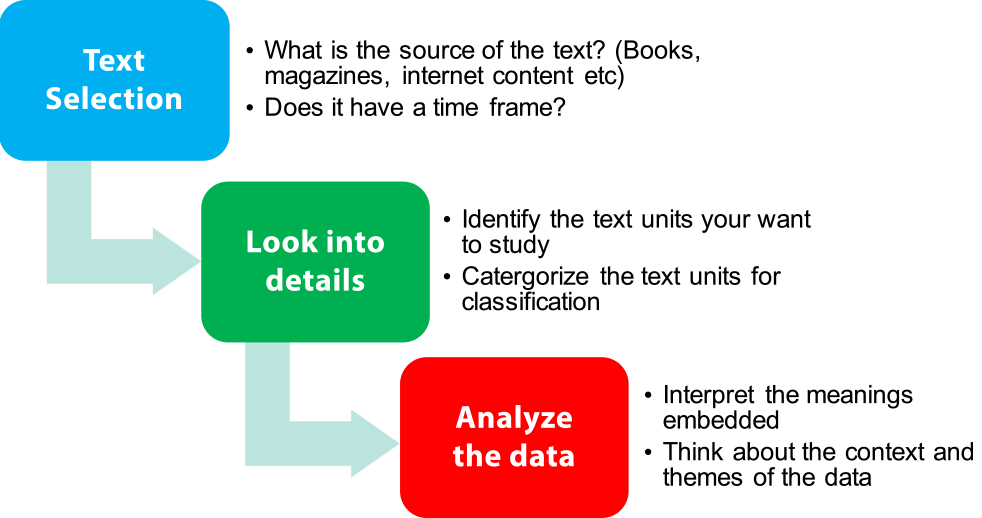Conducting Textual Analysis
Unlike researchers of quantitative analysis who are interested in counting the number of times the variables occur in a selected sample, qualitative researchers are interested to investigate the meanings embedded in the texts and the related context.

- We can never just describe a text, because every description is an interpretation, there are always many possible description/interpretations of each text.
- But there isn’t an infinite number of reasonable interpretations of any given text at a given time in a given place.
- When we produce an interpretation of a text, we have to put it into a context, i.e. whose interpretation are we guessing at - people reading it when it was first circulated or people reading it now?
- For this methodology, none of these interpretations is the single correct one. We are interested in finding out what interpretations people are likely to make of texts: not what interpretations we think they should make.
- It doesn’t really matter what the creator of the text think is the correct interpretation (with the exception that we can find evidence that audiences actually use that information themselves to interpret the text).
- You should begin your analysis of a text by making clear what questions you are trying to answer.
- It’s fine just to pick out the most interesting and relevant parts of a text for analysis; in fact, this is the correct approach for post-structuralist textual analysis.
